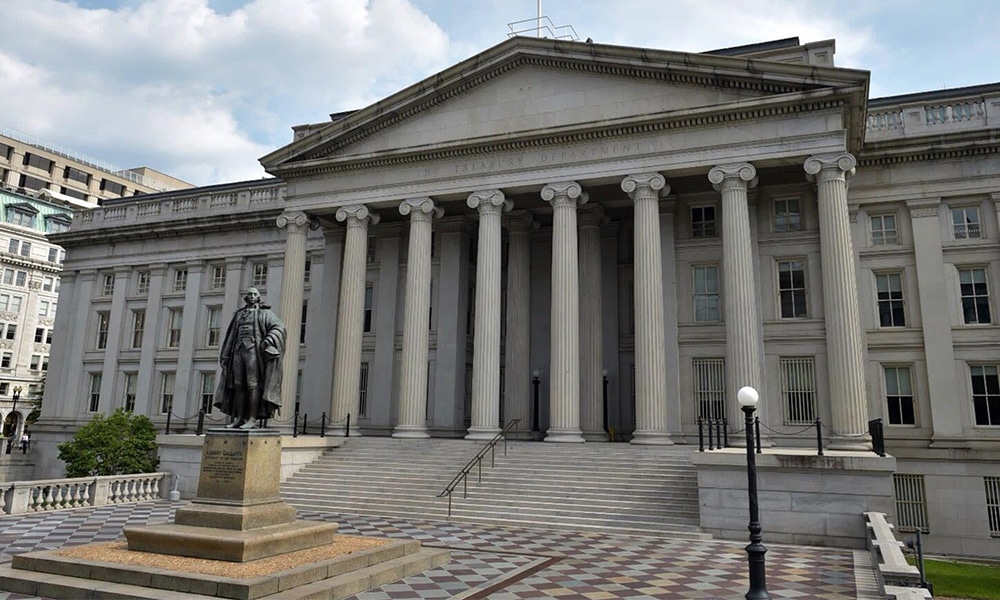

Treasury Will Lend USPS $10 Billion in Exchange for Proprietary Information
If you’ve looked at the news recently, you’ve likely seen pieces about the US Postal Service being in serious financial trouble. Thanks to pre-funding legislation that Congress passed in 2006, the organization finds itself with a massive amount of debt and federally-mandated payments it cannot possibility get rid of. Now, an injection of solvency may soon be around the corner. Wednesday morning on Capitol Hill, postal leaders agreed to the terms of the Treasury lending USPS a financial lifeline for the organization to stay operational. As part of the original Coronavirus relief package (titled the CARES Act), the Treasury will provide USPS with a $10 billion loan to remain solvent for at least another year. However, the deal doesn’t come without some serious concessions.
USPS Will Receive a $10 Billion Loan from the Treasury…With Strings Attached
As part of the original CARES Act passed in March, USPS was able to receive a $10 billion cash injection to stay operational and continue providing service to the American people. Initially, USPS balked at this offer, since the Treasury demanded the ability to set rates and prices for the Postal Service in return. However, months later, postal leaders have agreed to the terms of the original deal.
Now, the Postal Service must then provide something precious to the Treasury in exchange for the loan: copies of its 10 largest Negotiated Service Agreements. These Negotiated Service Agreements (or “NSA’s,” for short) are private contracts with high-volume third-party shippers such as Amazon, UPS, and FedEx.
NSA’s are a growing source of the Postal Service’s package revenues. As eCommerce surges and injects more parcels into the shipping industry than ever, these agreements have only grown in scope. In these agreements, USPS contracts with private-sector shippers for last mile delivery from distribution centers to consumers’ homes. Since these companies provide USPS with so many packages, the Postal Service then offers them marginal discounts. Ever since he took office in 2016, President Trump has attested that these small discounts are what’s crippling the Postal Service’s finances. Now that the Treasury plans to lend USPS this $10 billion, the Trump administration may have more sway over these previously-private contracts.
The Other Terms of the Deal
In order to receive the $10 billion loan, USPS isn’t just providing the Treasury proprietary information regarding their NSA’s. Here are some of the other major terms of the deal:
- USPS must provide the Treasury with monthly and quarterly financial and volume reports
- USPS must not spend any of the money it draws from the loan within 30 days
- Postal Service can’t access any of the loan if it has a cash balance of more than $8 billion
- Funding expires in March 2022
Obviously, these terms are quite disruptive to the Postal Service’s operations. In essence, the deal forces USPS to relinquish the autonomy it has operated under since its inception.
Since the deal would grant the Treasury too much potential control over USPS, Democrats urged postal leaders not to agree to the terms. Postal leaders attempted to re-negotiate, but the Treasury stayed adamant with their proposed terms. So, in order to receive this emergency funding, postal leaders felt the need to accept the deal as-is.
Is This $10 Billion Loan Even Critical for USPS?
Many USPS insiders are shocked and confused as to why postal leaders agreed to the terms of this loan in the first place. From a financial standpoint, USPS isn’t in as dire of a situation as the media has painted. Currently, USPS has $13 billion of cash on hand. This is plenty of financial runway for the organization to stay operational until at least the end of the year. Also, USPS could simply default on the payment of $8 billion it owes the Treasury when it’s due in September. USPS has defaulted on these payments for the past several years with no recourse, and can easily do so again in order to prevent insolvency.
In addition, many insiders have also questioned why postal leaders felt the need to provide proprietary information regarding the Postal Service’s NSA’s. Currently, a regulatory committee known as the USPS Board of Governors controls these Negotiated Service Agreements. As such, there’s automatically an unbiased party making sure NSAs are fair for both the Postal Service and the other parties involved.
In regards to the NSA’s, John McHugh, chairman of the Package Coalition advocacy group, provided the following statement:
“I’m a little surprised that condition is even necessary. The USPS itself has already hired outside consultants to look at these matters to determine if they’re profitable and fairly priced. If nothing else, it gives [the] Treasury entree to what up to this point has been absolutely proprietary information between only the USPS and its customer. One could argue this just another step to making the treasury secretary the de facto postmaster general.”
What Happens Now That the Treasury Will Lend USPS Cash?
The bottom line here is that now that USPS has agreed to the loan agreement, the Treasury may have more control over the purse strings. If the Treasury can take a peek at these NSA’s for the 10 biggest partnerships, they may be able to influence rates (or raise them). As a result, this would disrupt the fair market, and hurt small businesses that rely on the Postal Service’s affordable rates to survive.
One thing that’s important to keep in mind is that only the USPS Board of Governors sets rates and pricing for the Postal Service. The Treasury has never had influence over rates and pricing before, and this likely won’t change. The Senate is also in process of negotiating a new COVID-19 relief package, known as the HEALS Act. As part of this proposal, USPS wouldn’t receive this $10 billion loan with all the strings attached. Instead, the organization would receive a $25 billion cash injection on an as-needed basis to help with pandemic-related costs. Unlike the Treasury’s current loan conditions, that $25 billion wouldn’t come with any requirements to hand over proprietary information regarding finances and NSA’s.
All this said, we don’t expect USPS shipping rates to change any time soon. In the meantime, businesses and individuals that rely on USPS can still enjoy reliable delivery at affordable prices. As far as the financial state of the Postal Service goes, we’ll have a clearer picture on August 7th, when they announce their Q2 results. Considering package volumes (and revenues) are still on the rise due to the Coronavirus pandemic, we have a feeling that USPS will be just fine…for the next few months, at least.


Be the first to comment!